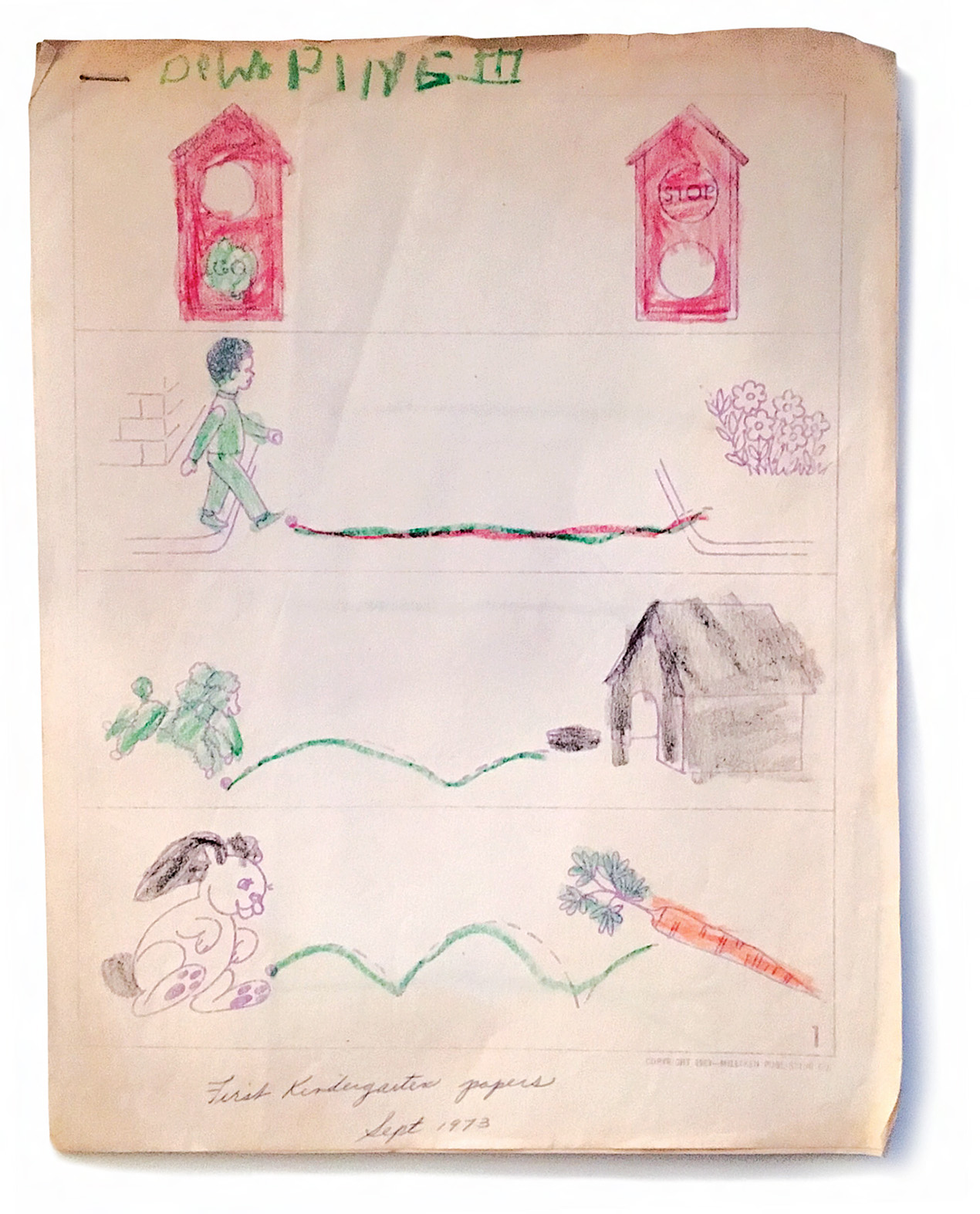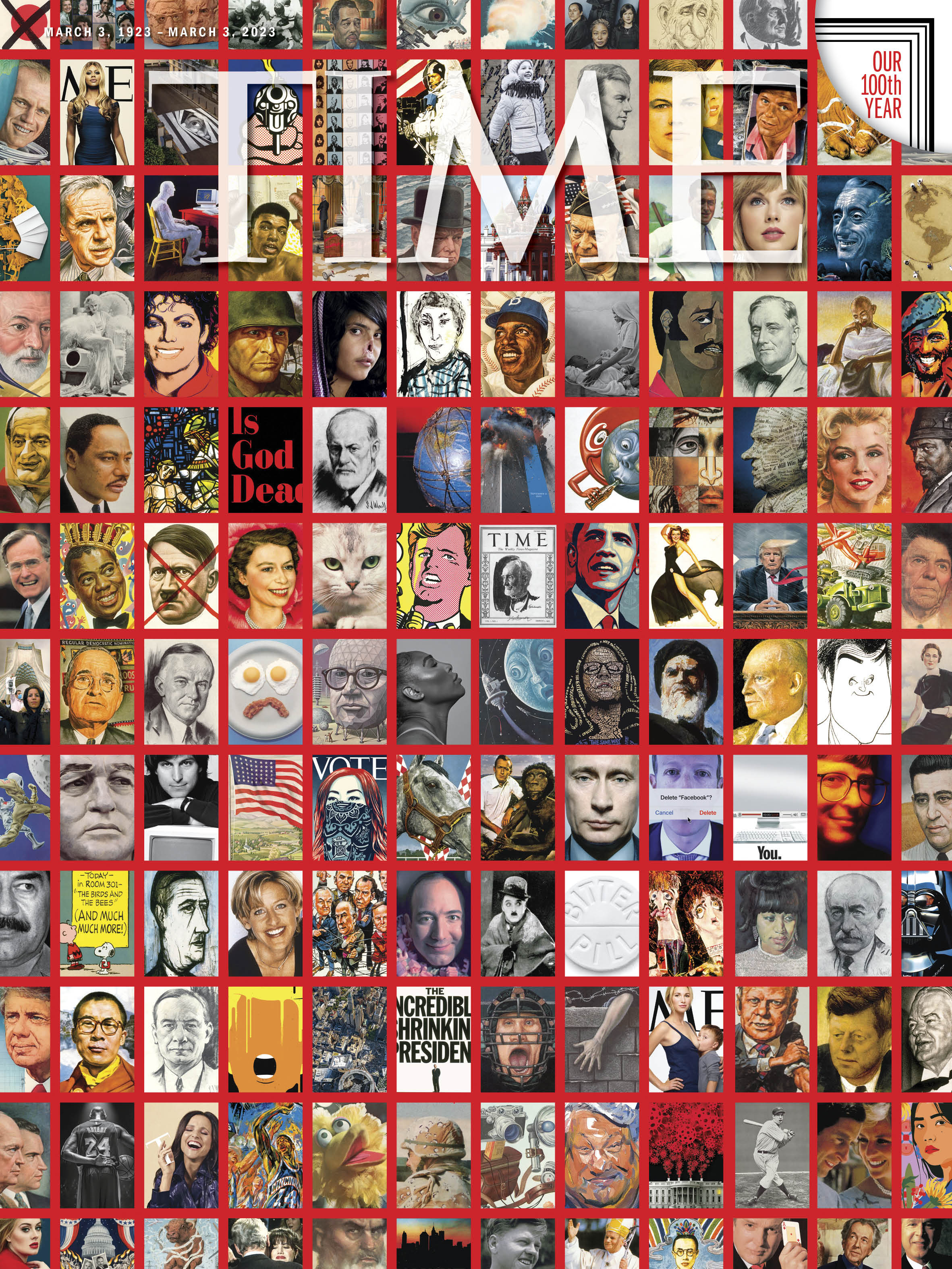Thanks to a mom who archived my childhood, I still have my “artwork” from Mrs. Matousek’s kindergarten class 50 years ago. It’s where I learned to color inside the lines. Clearly, the instruction made an impression. As creative director of TIME, I’ve spent almost half of my life “coloring” inside the blank canvas of the magazine’s cover. Every issue, I aim to create a poster for our times within its border.
That frame came into being another half-century before my childhood artistic endeavors, when, in TIME co-founder Briton Hadden’s New York City office, a friend of his named Philip Kobbe took out a red crayon and drew a thick line around the cover of a 1926 copy of the magazine. These days, we’re often told that to be creative we need to think outside the box. But as 5,223 issues (and counting) have shown over TIME’s past 100 years, creativity can flourish inside the lines. Thank you, Mrs. Matousek.

What I love about TIME is its authority to cover any topic: from health to sports, climate to technology, business to culture, world leaders to society to the President. And that same variety holds true in how the 8-by-10.5-in. space that is the cover is approached visually.
Since the charcoal portrait and hand-drawn line work of the first cover—dated March 3, 1923—nearly every medium out there has been used to create a TIME cover. The first three decades were dominated by lithographs, gouache, charcoal, black-and-white portrait photography, and watercolors. The 1950s and ’60s featured a little more experimentation: collages, wax sculptures, bold typography, pencil sketches, acrylics, casein, infographics, wood sculptures, felt-tip markers, nickel-coated plaster, tempera, pastels, papier-mâché, cut paper, metal, clay, oil painting, bronze casting, crayon, and landscape photography were the primary forms. The 1970s, ’80s, and ’90s brought with them silk-screen printing, marble, slate, photo collage, political cartoons, news photography, and color portraiture.
Read more: 13 Amazing Artifacts From Inside the Time Inc. Archives
The past quarter-century has featured artists working with 3D rendering, sand, quilting, quilling, stained glass, typographic portraiture, photo-illustration, interactive design, 360-degree photography, matchsticks, Mylar, augmented reality, illustrated graphics, optical illusions, and flying drones—958 of them, to be exact. And since most people now see TIME’s cover digitally, add animation and motion graphics to the visual mix.
The cover of TIME has often been called the most important real estate in journalism—making some of the world’s best photographers and artists its architects. Andy Warhol did five TIME covers from 1965 to 1986; Roy Lichtenstein produced two cover images within three weeks of each other in 1968. In 1965 and 1976, respectively, Marc Chagall and Robert Rauschenberg produced self-portraits to accompany cover stories about their work.

Buy a print of the TIME 100th Anniversary Centennial cover here
They fit in well with the renowned company of artists, photographers, and thinkers who produced covers: Jacob Lawrence, Ben Shahn, Robert Vickrey, Alex Katz, Romare Bearden, Christo, Charles Schulz, Al Hirschfeld, Milton Glaser, Jodi Bieber, James Nachtwey, Richard Avedon, Diana Walker, Ai Weiwei, Titus Kaphar, Mickalene Thomas, Olafur Eliasson, Beeple, Shepard Fairey, and JR, and the list goes on.
Read the First Issue Here in the TIME Vault
In 1978, the magazine donated 800 works of original cover art to the National Portrait Gallery, which has preserved and digitized that history. The collection now includes more than 2,000 pieces. These covers are noteworthy on their merits, but several among them turned out not simply to record news, but also to make it. TIME covers have affected government policy and individual actions, challenged public opinion, and launched careers.
May past be prologue, and the space inside TIME’s red border remain an essential canvas for another 100 years.

To mark TIME’s 100th anniversary, we’re revisiting some of our most influential covers, with the people who lived that history. Find more of this series at time.com/100-years
More Must-Reads from TIME
- Donald Trump Is TIME's 2024 Person of the Year
- Why We Chose Trump as Person of the Year
- Is Intermittent Fasting Good or Bad for You?
- The 100 Must-Read Books of 2024
- The 20 Best Christmas TV Episodes
- Column: If Optimism Feels Ridiculous Now, Try Hope
- The Future of Climate Action Is Trade Policy
- Merle Bombardieri Is Helping People Make the Baby Decision
Contact us at letters@time.com